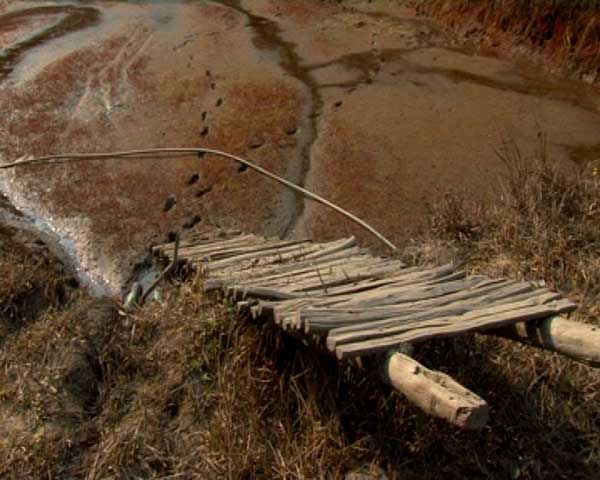Long-time economic, political and market analyst Bob Chapman publishes the International Forecaster, offering incisive analysis absent through mainstream sources, especially important now given America's deepening economic crisis getting harder to conceal as evidence mounts.
His August 25 issue says the following:
"Twenty countries (including America) are headed into bankruptcy and more will follow. That brings up the subject of state debt in the US. America has been in an inflationary depression for 18 months. States have been cutting back for two years," but still face huge budget gaps required to be closed....2011 will be a terrible year (with) 80% of states expect(ing) deficits of more than $200 billion. 2012 looks even worse." Most worrisome, "there is no recovery and there never has been....the US economy and financial system is comatose." The worst is yet to come and will hit hard on arrival.
On August 24, economist David Rosenberg said, "Now (I'll) tell you why this is a depression, and not just some garden-variety recession," what he's been repeating for months unlike few others, corporate analysts claiming the fall 2007 downturn "ended sometime last year." Not so, it's deepened, growing evidence providing more clarity.
Offering a historical perspective, Rosenberg said the Great Depression wasn't marked by declining GDP each quarter. The 1929 - 33 recession lasted four years, followed by recovery and another "deep downturn" in 1937 - 38.
During the first one, "there were no fewer than six - six! - quarterly bounces in GDP data," averaging 8% at an annual rate, accompanied by sharp market increases, then declines confirming false positives. So "guess what? We may be reliving history (now). If you're keeping score, we have recorded four quarterly advances in real GDP," averaging only 3%. The late 1930s reversal showed "how fragile the post-bubble recovery really was," a faux one again repeated in a weaker economy now than then, one headed for serious trouble ahead, harming millions more Americans as a result.
The Fed cut interest rates to near zero with no effect, at best buying time, resolving nothing. "Then the Fed tripled the size of its balance sheet - again with little sustained impetus to a broken financial system."
Weeks back, then confirmed with new data, Rosenberg stressed weakness, numerous indicators turning down, including production, retail sales, consumer confidence, and housing, a bellwether industry impacting the entire economy. New reports show it's collapsing, some readings to record lows, others disturbingly weak throughout the country.
July existing home sales dropped 25.5%, the largest monthly decline since records began in 1968, bringing annualized sales back to 1995 levels, and signaling worse trouble ahead. Other housing data confirm the malaise, including new home sales, housing starts and permits.
As worrisome were increasing layoffs and first-time unemployment claims hitting 500,000, flashing red for trouble nearly three years after the initial downturn, combined with a near-22% unemployment rate, not the bogus 9.5% headline number, the 1980 calculation reengineered to conceal weakness like all other fake economic data, putting lipstick on an economy, increasingly looking and smelling more like a pig, a sick one.
According to Rosenberg, "You know you are in a depression when:
-- "Congress (extends) jobless benefits seven times (in the past two years) when almost half (of those) unemployed have been looking for at least a half year;"
-- the adult male unemployment rate (25 - 54 years) "hit a post-WW II (high and still tops) the 1982 peak," the worst then since the Great Depression;
-- "youth unemployment is stuck near 25%," and for inner-city black youths it's 80% or higher; "these developments will have profound long-term consequences - social, economic and political;"
-- the depression's fiscal costs keep mounting, the federal deficit soaring with no end to it in sight;
-- for over a year into a supposed recovery, the Fed still contemplates new ways to stimulate growth, its tool, of course, printing money (funny money, or as one analyst calls it, "toilet paper") and quantitative easing, compounding the deficit, or the equivalent of throwing fuel on a fire instead of monetary and fiscal sanity plus sound economy policies to extinguish it;
-- after two years of record trillion dollar plus deficits to kick-start the economy, interest rates are shockingly low, flashing weakness, not strength; to wit, on August 24, the 5-year note was 1.36%, 7-year at $1.95%, 10-year at 2.50%, and 30 year at 3.57%; as well as 30-year fixed mortgage rates at record lows below 4.5% (4.42% on August 24), despite "no fewer than eight (government) programs to put a floor under the housing market;" we're in big trouble "when (Washington) can expend so many resources (on) one sector" in vain;
-- the FDIC keeps shuttering more banks; again, the carnage keeps spreading, yet most economists cling tenaciously an economic recovery theme, at most hit by a soft patch; Rosenberg's response - "Some recovery (when) the private credit market is basically defunct....what replaced it was rampant government intervention (buying time) by trying to (put) a floor under the economy;" once it stops, and it will, they'll be no hiding the dire truth, and no end of pain for growing millions.
The Worst Is Yet to Come
Financial expert and investor safety advocate Martin Weiss began warning about a major economic decline long before it began and keeps at it, citing evidence most analysts downplay or ignore, including:
-- America's worst ever housing depression showing no signs of abating; since January 2006, housing starts alone have plunged from 2.3 million annually to a recent 477,000 low that may not yet reflect a bottom because demand is so weak for this bellwether industry;
-- record long-term unemployment, its worst since first officially tabulated over 60 years ago; and
-- "the most chronic credit squeeze ever recorded....suffer(ing) its deepest plunge since WW II."
As a result, he sees deepening economic trouble ahead, no matter what steps the administration, Congress or the Fed undertake. He expects little more stimulus, just another futile central bank attempt to print money (lots of it) to buy time. "These paper dollars will not create real prosperity," just an illusory, "temporary, false prosperity," but none at all for most people, hung out to dry on their own.
He also expects a sovereign debt crisis to hammer Europe and the US, saying America's plight exceeds the dire situation of PIIGS countries (Portugal, Italy, Ireland, Greece and Spain), citing the Bank of International Settlements (the central bank of central bankers) saying US debt will hit 400% of GDP, more than triple Greece's burden at 129% that plunged the country into (undeclared) bankruptcy. Indeed the worst for America is yet to come.
America Is Already Bankrupt
Boston University Economics Professor Laurence Kotlikoff explains it in his August 10 article, titled "US Is Bankrupt and We Don't Even Know It," saying:
"Let's get real. The US is bankrupt. Neither spending more nor taxing less will help the country pay its bills." What's needed, he says, is reengineering the economy by "radically simplify(ing) its tax, healthcare, retirement and financial systems...." Revitalization depends on it with unfunded liabilities topping $110 trillion and growing. Even the IMF is worried, saying "closing (America's) fiscal gap requires a permanent annual fiscal adjustment equal to about 14 percent of US GDP," meaning, of course, from working households, not corporate interests or national security, the most glaring areas needing reform.
The fiscal gap represents "the difference between projected spending (including debt service) and projected revenue in all future years. (It's) the government's credit-card bill and each year's 14 percent GDP is the interest on that bill."
When it's not paid, it increases the balance owed. And each trillion the Fed prints bailing out bankers compounds it. Make them pay, not the public they robbed, starting with shutting them down, breaking them up, seizing their assets, and nationalizing them for the collective good.
Kotlikoff is scary saying "Uncle Sam's Ponzi scheme will stop, (perhaps) in a very nasty manner," citing three possibilities:
(1) massive benefit cuts on retirees;
(2) huge tax increases hitting working Americans hardest, and/or
(3) printing vast amounts of money ad infinitum until debt overload crashes the economy eventually.
Calling America "Worse than Greece," he believes "Most likely we will see a combination of all three responses with dramatic increases in poverty, tax(es), interest rates and consumer prices," the path we're on heading us for the worst of all possible worlds.
Based on the latest Congressional Budget Office (CBO) data, he calculates a $202 trillion fiscal gap - "more than 15 times the official debt" because Congress "label(s) most of its liabilities 'unofficial' to keep them off the books, (out of sight) and far in the future" to concern other officials, not them. Labeling, of course, isn't fixing. It's just concealing unpleasant realities, letting others, not them, face the music in out years.
Current federal revenue totals $14.9% of GDP, the IMF saying that closing it requires "an immediate and permanent doubling of our personal-income, corporate and federal taxes as well as the payroll levy set down in the Federal Insurance Contribution Act."
Such policy would produce a 5% surplus this year, the IMF prescribing ad infinitum fiscal austerity, saying delay will make it tougher ahead. "Is the IMF bonkers?" Not at all, just preferential, wanting workers, not special interests hit hardest, the way it's raped and mauled economies for years, serving capital, not people, now aiming at America, the biggest plum of all ripe for plucking with millions of vulnerable households, easy pickings for the powerful, harming, not relieving their needs by:
-- cutting wages and benefits;
-- destroying, not creating jobs; privatizing everything for private gain; and
-- turning America into Guatemala, a corporatist's dream.
Indeed let's get real. Bad policy begets bad results, and bad solutions makes it worse. For sure, America is "broke and can no longer afford no-pain, all-gain 'solutions.' "
It needs responsible ones, too many to list, but here's a few:
-- end imperial wars and a bloated defense budget;
-- reinvent government to make it responsive to public needs and democratic values;
-- make offenders pay most, starting with Wall Street, defense contractors, Big Oil, Big Pharma, Agribusiness, and other corporate predators profiting at public expense for decades;
-- make now the time for payback, assuring their victims fair and equitable reimbursements;
-- reinvigorate industrial America;
-- end Wall Street's financial chokehold;
-- return money creation power to Congress as the Constitution mandates;
-- encourage publicly-owned state banks like North Dakota's, making it prosperous when most states are debt-strapped and faltering;
-- create full-time, good-paying jobs with benefits; don't destroy them;
-- bring back those offshored;
-- protect homeowners from foreclosure;
-- re-institute progressive taxes, including a Tobin tax (perhaps 1%) on all speculative financial transactions, a millionaire's/Wall Street bank levy generating a huge windfall, enough to smack if not close the budget gap, making those most able pay; for example, the Bank for International Settlements estimated annual 2008 global over-the-counter derivatives trading at $743 trillion; a 1% tax would yield $7.43 trillion, and if taxes curbed speculation, the take would still be enormous;
-- dismantle corporate predators;
-- think small and local, not big and global;
-- reinstitute financial, environmental, and other consumer-friendly regulations;
-- get money out of politics;
-- end the two-party monopoly;
-- institutionalize a free, open, fair media and Internet;
-- assure equitable social benefits for all, including universal, single-payer health care, government-supported public and higher education, and more; and
-- reinvigorate an eroding democracy before it's too late to matter.
Responsible policies, all of the above and more, will reinvigorate America. The unsustainable fiscal crisis is reason enough to do it.

